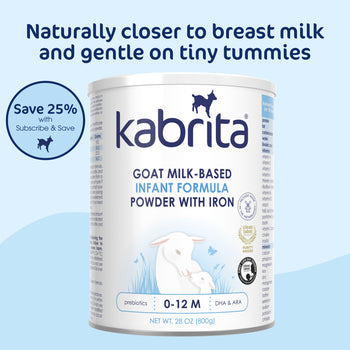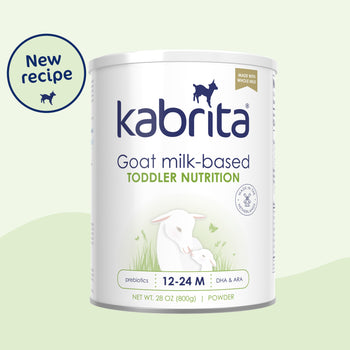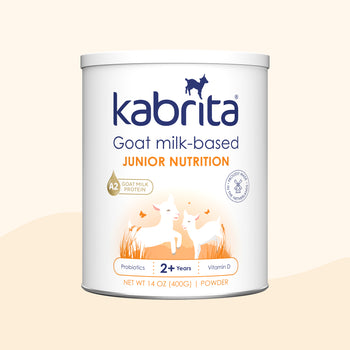Understanding the Protein in Baby Formula

Protein is a critical macronutrient for babies and is required for the proper growth and development of muscles, bones, teeth, hair, and the immune system. Read on to learn about protein commonly found in baby formula and how some proteins may be easier to digest than others.
Common proteins found in milk
Whey and casein are the two main groups of protein found in breast, cow and goat milk. When the proteins in milk reach the stomach, whey remains liquid while casein forms a curd.
Casein composition varies between milk
Casein refers to a group of proteins and the casein composition will vary between breast, goat and cow milk.
Cow’s milk, for example, contains a higher amount of alpha-s1 casein compared to goat’s milk.

Alpha-s1 casein has been shown to affect the size and tension of the curds formed in the stomach. More alpha-s1 casein is associated with larger and denser curds in the stomach. In contrast, less alpha-S1 casein contributes to a smaller, softer and looser curd, which may be digested more easily.

Adding whey to baby formula
Breast milk contains considerably more whey than cow or goat milk. Cow and goat milk protein, for example, are made up of 20% whey and 80% casein, while breast milk has about 60% whey and 40% casein. As such, some formula companies may choose to add additional whey protein to their formula to better model the whey to casein ratio found in breastmilk. Because whey is easier to digest than casein, adding whey protein to baby formula may help to reduce tummy troubles in little ones.
Specialty formulas
Some medical conditions may necessitate the use of formulas in which the proteins have been hydrolyzed. Hydrolyzed protein refers to proteins that have already been broken down (either partially or extensively). In some instances, some babies may be recommended a formula with no milk-based proteins, such as a soy-based formula.
In summary
Milk protein can be broken down into two parts: casein and whey. Because whey stays fluid in the gut, it tends to be easier to digest than casein. Breastmilk has a higher whey to casein ratio than cow’s and goat’s milk, and as such, some formula companies may choose to add whey to their formula to better model the whey to casein composition found in breastmilk. Unlike cow’s milk, goat’s milk contains little to no alpha s1 casein; a protein associated with larger and more dense curd size and quality. As such, goat’s milk may be easier to digest and gentler on tiny tummies. Hydrolyzed formulas and soy-based formulas may a suitable alternative for babies who have medical conditions that necessitate the use of a specialized formula. We encourage parents to consult with their healthcare provider before making a feeding change.
Want to learn more about other macronutrients in formula? Visit our blogs on Understanding Fat and Carbohydrates in Baby Formula.
Kabrita Goat Milk Toddler Formula may be an option for little ones during feeding transitions, such as weaning and supplementing, or those with minor issues associated with cow milk sensitivity*.
*Not suitable for children with confirmed cow milk protein allergy



